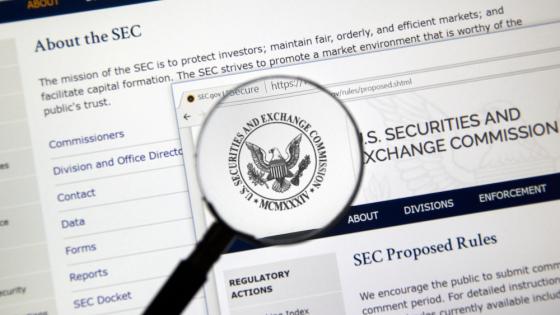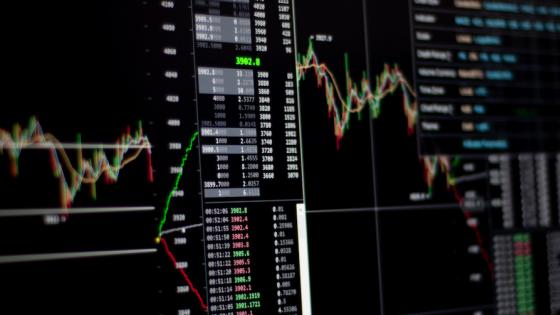Over the past two decades, the world of security trading has experienced a sequence of sweeping changes. At the beginning of the 2000s, most of the world exchanges moved away from the mutually owned, not-for-profit model that had prevailed previously and converted into publicly listed, profit-oriented companies, thereby embracing a shareholder-value based objective function. This led to regulatory interventions both in the US (RegNMS in 2005) and the EU (Mifid in 2007) to stem asset exchanges’ market power over trading fees. Regulation, together with the liberalisation of international capital flows and technological developments, then led to an increase in fragmentation and competition among trading platforms. Incumbent exchanges such as the New York Stock Exchange (NYSE), reacted to increased competition by upgrading technology (e.g. creating ‘NYSE Arca’) or by merging with other exchanges (for example, the NYSE merged with Archipelago in 2005 and with Euronext in 2007), possibly to recoup market power. In the US there are 16 ‘lit’ stock venues – and 30 alternative ones ¬– but 12 of them, which account for about two-thirds of daily trading, are controlled by three major players: Intercontinental Exchange, Nasdaq, and CBOE.
As a result, the trading landscape has changed dramatically. Today, large-cap stocks commonly trade in multiple venues, a fact that has led to a decline in incumbents' market shares, giving rise to a ‘cross-sectional’ dimension of market fragmentation (see Figure 1). The automation of the trading process has also spurred fragmentation along a ‘time-series’ dimension, as some liquidity providers' market participation is either limited (Duffie 2010), endogenous (Anand and Venkataraman 2016), or impaired because of the existence of limits to the access of reliable and timely market information (Ding et al. 2014). This has highlighted the extent to which accessing market information, and the ability to timely react to it, has become an ‘essential input’ to allow profitable trading and liquidity provision. With trading fees reduced to competitive levels (Foucault et al. 2013, Menkveld 2016, Budish et al. 2019), exchanges have steered their business model towards the provision of technological services.
Regulatory changes in the US
It is precisely the pricing of such services that has recently drawn the attention of US policymakers and regulators, who are concerned about the possibility of monopoly restrictions. Possibly due to many stock exchanges’ past (not-for profit) model, which also granted them ‘self-regulatory’ status, the Securities and Exchange Commission (SEC) has largely maintained a non-confrontational attitude in the face of the price changes it was asked to approve (Jackson 2018). This has led to a heated debate pitting ‘high-frequency traders’ and liquidity providers against exchanges over the price of technological services. After some back and forth, in August 2020 the commission eventually decided to side with market participants and rescind the rule allowing exchanges to change their ‘core’ data fees. From September 2020, such changes have been subjected to public comment and regulatory approval (giving the commission control over exchanges’ fee setting process).
Figure 1 Market shares among trading venues in the US in 2018
Source: CBOE Global Markets, own calculations.
Is this move by the Securities and Exchange Commission supported by a competition and welfare analysis? When is regulatory intervention warranted? Should a regulator set the price of technological services and if so, how? Do merger policy and the control of exchange entry have a role to play?
The analysis
In a recent paper (Cespa and Vives 2021), we address these issues by modelling liquidity provision as a vertical market where strategic ‘upstream’ exchanges – who incur a fixed cost to set up shop – supply technological services (connectivity) to competitive ‘downstream’ liquidity providers. We argue that through such services, liquidity providers can be continuously present in the market, thereby improving their ability to satisfy liquidity traders' demand for immediacy (Zoican 2014), boosting liquidity provision and overall market liquidity (similarly to what is argued by Baldauf and Mollner 2019).
This uncovers a nexus between the industrial organisation of stock markets and stock market quality, yielding the first prediction of our model which relates competition among exchanges and market liquidity. Indeed, we find that a reduction in exchange competition (by increasing the connectivity fee) leads to a reduction in the mass of dealers with a continuous presence in the market, with a negative impact on liquidity. Recent empirical analysis provides support to this result (Brogaard et al. 2021).
We then put the model to work by comparing the market solution, with free entry of exchanges that compete strategically in an oligopoly to supply connectivity, with the second-best solutions a regulator can implement. We find that regulation (such as conduct/price setting or structural/entry control) can improve upon the market solution. We also find that if the regulator can only control connectivity fees, it is optimal to have only one exchange (because of economies of scale). But if the regulator can only control entry, the market may deliver excessive or insufficient entry of trading platforms with respect to the welfare optimum.
A monopolistic exchange restricts the supply of technological services to increase the fees it extracts from liquidity providers who benefit from a continuous market presence. The market solution with free platform entry yields a superior outcome in terms of liquidity and (generally) welfare. But compared to a welfare benchmark where a planner chooses the number of competing exchanges (the ‘structural’ 2nd best), the market solution can feature excessive or insufficient entry. This is because an exchange’s private entry decision does not internalise the profit reduction it imposes on its competitors. Such ‘profitability depression’ is conducive to excessive entry. Platform entry, however, also favors price competition, by increasing the take up of technological services by liquidity providers, improving risk-sharing and spurring liquidity.
It also has a positive ‘liquidity creation’ effect which benefits traders and can offset profitability depression, leading to insufficient entry. These results are reminiscent of similar findings in previous industrial organisation research studying oligopolies (Mankiw and Whinston 1986, Ghosh and Morita 2007). In the context of a vertical oligopoly, it is known that upstream entry can have a welfare-improving, ‘business creation’ effect that offsets the familiar welfare-reducing, ‘business stealing’ effect. Importantly, however, liquidity creation in this case works through the improved risk-sharing effect induced by increased entry. As a result, and differently from the standard industrial organisation framework (where business creation only obtains when the downstream sector is imperfectly competitive), in this sector of the financial intermediation industry the positive welfare effect of entry arises even though liquidity providers are perfectly competitive.
Our results show that platform entry is often excessive. But when payoff volatility is low, entry is insufficient for intermediate values of the entry cost. Intuitively, when the entry cost is small, the number of platforms (and the associated total technological capacity these supply) is high. This means that profitability depression dominates and entry is excessive. As the entry cost increases, the two externalities tend to offset each other, eventually leading liquidity creation to dominate with insufficient entry. Finally, when the entry cost is very large, entry becomes so expensive that the two externalities equilibrate again.
Regulate fees or entry?
We find that the optimal second-best regulatory intervention revolves around a simple trade-off: increasing competition or lowering the technological service fee. In our view, this spurs the production of technological services which depresses industry profits while increasing liquidity. When the wedge between first best and monopoly capacity is sufficiently large, entry regulation is inferior. In this case, the large capacity increase required to approach the first best is cheaper to achieve by forcing the monopolistic exchange to charge the lowest, break-even compatible, technological service fee. Conversely, when the wedge between monopolist and first best capacity is small, a smaller increase in technological capacity is required to approach the first best. In this case, the regulator may choose to control entry, since the fee ensuring that a monopolist breaks even yields a large profit depression and a mild market participants’ welfare gain.
Estimating the magnitude of the wedge between first best and monopoly capacity is therefore crucial to assess the superiority of a specific regulatory instrument. In this respect, our analysis shows that the presence of dealers committed to supplying liquidity at each round (such as designated market makers) can tilt the trade-off towards entry regulation. Indeed, the presence of such liquidity providers adds risk-sharing opportunities to the market, but also increases the weight of market participants who are penalised by the heightened competition permitted by technological services. In such a situation, the regulator may find it optimal to leave some market power to exchanges.
Conclusions
Our results suggest that exchanges’ technological capacity decisions are an important driver of market liquidity, adding to the usual, demand-based factors highlighted by market microstructure research (e.g. adverse selection, arbitrage capital, risk bearing capacity of the market). As a result, any argument about market liquidity should take into account the framework within which exchanges interact. In this respect, our results can contextualise the recent entry of three new exchanges in the US equity trading industry. In our view, this should exert (a) a downward pressure on the cost of technological services, and (b) a positive impact on (aggregate) market liquidity.
References
Anand, A and K Venkataraman (2016), “Market conditions, fragility, and the economics of market making”, Journal of Financial Economics 121(2): 327-349.
Baldauf, M and J Mollner (2019), “Asymmetric speed bumps: A market design response to high-frequency trading”, VovEU.org, 31 October.
Brogaard, J, J Brugler and D Rösch (2021), “Competition and exchange data fees”, SSRN Working Paper.
Budish, E, R Lee and J Shim (2019), “Will the market fix the market? A theory of stock exchange competition and innovation”, working paper.
Cespa, G and X Vives (2021), “Exchange competition, entry, and welfare”, Review of Financial Studies, forthcoming.
Duffie, D (2010) “Presidential address: Asset price dynamics with slow-moving capital”, Journal of Finance 65(4): 1237-1267.
Foucault, T, M Pagano and A Röell (2013), Market Liquidity, Oxford: Oxford University Press.
Ghosh, A and H Morita (2007), “Free entry and social efficiency under vertical oligopoly”, RAND Journal of Economics 38(3): 541-554.
Jackson, J (2018), “Unfair Exchange: The State of America's Stock Markets”, speech.
Mankiw, N G and M D Whinston (1986), “Free entry and social inefficiency”, RAND Journal of Economics 17(1): 48-58.
Menkveld, A J (2016), “The economics of high-frequency trading: Taking stock”, Annual Review of Financial Economics 8: 1-24.
Zoican, M (2014), “Finance at the speed of light: Is faster trading always better?”, VoxEU.org, 20 September.




